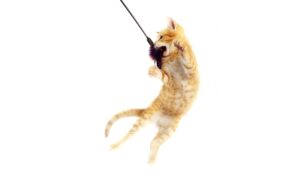Consumers Seek Safe Pet Food Packaging
Glenn Polyn //August 26, 2020//
In 2019, the U.S. spent $36.9 billion on pet food and treats, according to the American Pet Products Association, and that figure is expected to grow in 2020 as pet owners are spending more for high-quality foods and premium packaging features. Today’s pet owners have the same expectations for pet food packaging as they do their own: it should keep food fresh and safe, and it should be functional and eco-friendly. To align with these priorities and ensure your products have a positive impact on pet health and safety, you should weigh your packaging options carefully.
Maintaining Product Integrity
According to Packaged Facts, 75 percent of millennial dog owners said that fear of pet food contamination or product safety is a key consideration in the foods they buy. This gives brands the challenge of providing packaging solutions that maintain product integrity from manufacturing through consumption.
Brands seeking new pet packaging options should utilize suppliers that use approved materials and are FDA-recognized for their manufacturing processes. This will help ensure that the packaging does not have a negative impact on the food or pet. Low-quality resins, inks, and adhesives used in package assembly could cause safety concerns or leach into the food and create an odor or taste that is undesirable to a pet. Once assembled, the package must survive the rigorous brick-and-mortar or e-commerce supply chain.
Quality package materials and designs like those found in flexible packaging offer excellent product protection. When paired with proper closure technologies, flexible packaging can increase pet food’s shelf life by providing a secure oxygen barrier that keeps food fresh and protects it from a number of contaminants like bacteria, pests, odor, light, and moisture. Creating a secure oxygen barrier is crucial in keeping food fresh. Flexible packaging also provides durable, puncture-resistant protection that helps keep food safe during distribution. Once the package arrives in the end-user’s home, it must maintain its functionality.
Safety During Consumption
As much as pet owners want to protect their animals, personal convenience plays a role in their decision-making when it comes to pet food packaging. According to a study by WestRock, 76 percent of consumers want packaging that is easy to open, and 76% of consumers say features like resealability are important to packaging satisfaction. If pet food packaging is not user-friendly or does not function properly, owners might transfer the food to a secondary container. This could compromise the food’s freshness or lead to contamination, resulting in a negative experience for the animal.
According to the FDA, the best way to preserve dry pet food’s nutritional value is by storing the food in its original package and tightly folding the top of the package. This provides the additional benefit of having the UPC code, lot number, brand, manufacturer, and “best by” date easily available in case of a product defect or recall. While pet owners must make responsible decisions when it comes to pet food, brands can make those decisions easier by providing packaging that maintains its functionality during its useful life. Utilizing flexible packaging with reclosability features allows pet owners to properly store food and seal in the freshness.
Benefits for Pet Owners
In addition to food safety and package functionality, many pet owners seek products that protect the environment. According to a survey by Accenture, 83 percent of respondents believe it’s important or extremely important for companies to design products that are meant to be reused or recycled. Luckily, there is little difference in sustainability goals between packaging for pet food and our food, which has allowed brands to implement flexible packaging options. Flexible packaging can increase manufacturing efficiencies and reduce carbon emissions, water and fossil fuel usage, and materials to landfill (Flexible Packaging Association), helping to protect the environment we enjoy with our pets.
Packaging with Purpose
Consumers expect pet food packaging to have a purpose beyond the time it’s utilized in their homes. Health and sustainability play a key role in that, and brands that can explain precisely how their pet food packaging makes a difference in keeping animals and the planet safe will attract like-minded consumers.



















